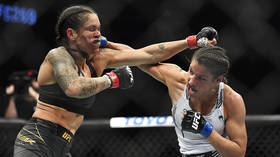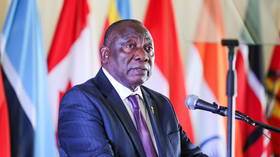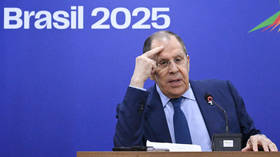The world-beating Soviet gymnast whose triumph turned to tragedy
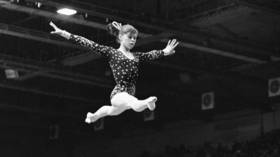
In the quiet corner of a Moscow cemetery, a black slab of marble stands surrounded by the December snow
Flanked by two small pots of flowers, its gleaming face bears the image of girl, a perfect picture of poise and concentration.
The four words engraved just to the right of the image are stark: ‘Great gymnast, world champion’.
This is the final resting place of Elena Mukhina, one of the most remarkable athletes ever to grace her sport; an artist who pushed the limits of the human body in a way few have ever done.
This year marks the 15th anniversary since Mukhina’s death on December 22, 2006. She was 46 years old.
Hers was a life blessed with triumph but befallen by tragedy; a cautionary tale of a career cut brutally short by a life-changing injury.

CHILDHOOD TRAUMA
Mukhina was born in Moscow on June 1, 1960. Her childhood was not a happy one. She lost her mother at an early age, in a tragedy apparently caused when her alcoholic father set fire to their apartment.
Mukhina was taken in by her grandmother, Anna, with her father never to play a meaningful role in her life again.
In many ways, the tragedy foreshadowed the sadness which would pursue Mukhina for the rest of her days.
It was, however, from these inauspicious beginnings that a prodigious talent was born.
Already fixated with gymnastics when other girls were keen on figure skating, Mukhina would encounter the hand of fate when coach Atonina Olezhko visited her school and posed the question to the class: who among them would be keen on training? As Mukhina would later recall, her hand shot up without hesitation. “I almost screamed with joy,” she said.
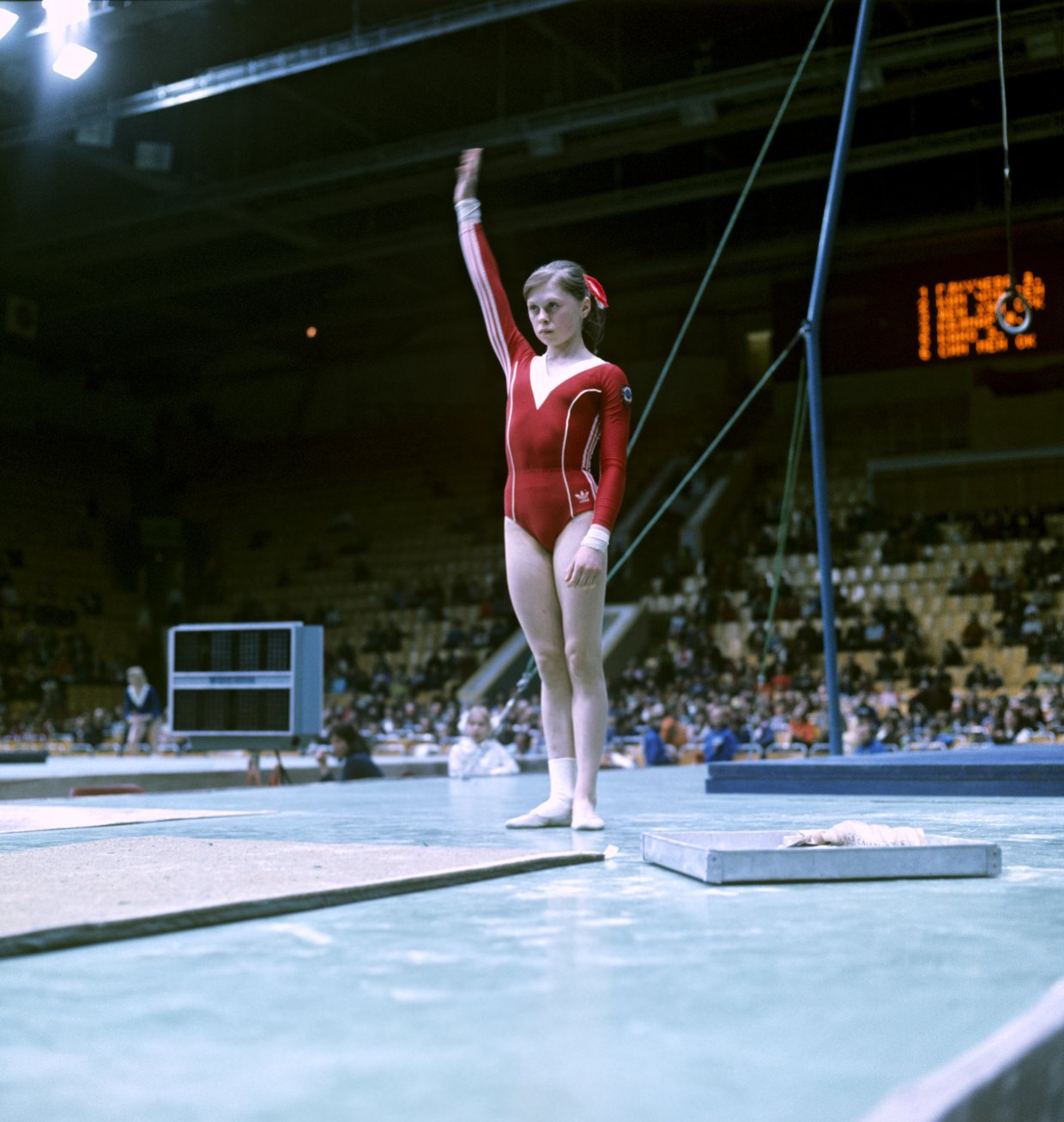
A FATEFUL PARTNERSHIP IS FORGED
Mukhina’s first serious steps were taken under the tutelage of Alexander Eglit. Mukhina would always remember him with fondness, and together she rose to become Moscow champion. Eglit, however, gradually came to understand that the gaunt-looking child in his charge possessed a talent which warranted more professional attention.
That realization precipitated a meeting on December 28, 1974, with the man who would alter the course of Mukhina’s life thereafter: Mikhail Klimenko.
Klimenko was a former Soviet junior gymnastics champion known for coaching male athletes. His younger brother, Viktor, had won Olympic gold in Munich in 1972, but Mukhina was to be the first female gymnast he would endeavor to forge into a world-beater.

Stick-thin, Mukhina was initially viewed as being behind her contemporaries at her new CSKA training home. Gradually, though, Klimenko would become convinced that this was a gem who could be polished – gently or otherwise – into a champion.
Crucially, Mukhina possessed a remarkable persistence and a talent for carrying out Klimenko’s instructions to the letter.
Just as gymnastics was becoming more demanding following the graceful elements of the likes of the legendary Larisa Latynina and Ludmilla Tourischeva, Klimenko saw the chance to bring in more powerful and increasingly complex elements from men’s gymnastics and impose them on his new protegee.
A new version of the Korbut loop – named after Soviet four-time Olympic gold medalist Olga Korbut – was devised for Mukhina to perform. Mukhina also pioneered new elements on the bars and in her floor routines.
By the time of the 1976 Olympics in Montreal, she was already making a name for herself but was not yet consistent enough to earn a place among the Soviet ranks.
In the event, the Games would be remembered for the iconic performance from Nadia Comaneci, the Romanian who picked up a haul of three golds – including the all-around title – and five medals in total. Comaneci famously earned the first-ever perfect 10 score for her performance on the uneven bars.
SOVIET NATIONAL PRIDE
For the Soviet team, coached by former champion Latynina, Comaneci's dominance was a galling experience against a supposedly lesser sporting nation in the empire’s sphere of influence.
It had to be rectified, and Mukhina emerged as one of the answers.
Under the ever-demanding eye of Klimenko, Mukhina became all-round silver medalist at the Soviet championships in 1977, the same year she won three titles at the European championships in Prague along with one silver and one bronze, as well two World Cup titles.
The best, however, was yet to come.
Mukhina’s apotheosis arrived in 1978 with a breathtaking performance at the World Championships in Strasbourg, France. It remains one of the greatest individual showings gymnastics have ever seen.
Aged 18, Mukhina was imperious as she won gold in the all-around, team and floor events, as well as picking up silver medals in the uneven bars and balance beam.
Despite beating Mukhina to gold on the beam, Comaneci settled for a solitary title and two silvers at the event. The balance of power appeared to be shifting. Comaneci herself would tip Mukhina for Olympic glory.
NO PAIN, NO GAIN
Rivals in the arena, Comaneci and Mukhina were united in the debilitating pressures they had faced to reach the top. The Romanian endured her own brutal training routine, and later revealed she had even attempted suicide prior to the 1978 World Championships.
For Mukhina, a disturbing pattern had already emerged of an athlete being forced to push through injury in a clamor to the pinnacle of her sport.
Back in 1975, she had suffered a spinal injury which required hospital treatment and rest. Klimenko, however, had other ideas, reportedly removing her from hospital and directly back to training, taking off the orthopedic brace from around her neck.
The mantra appeared clear: injury was weakness or unwillingness, Mukhina had to break through the pain to achieve greatness.
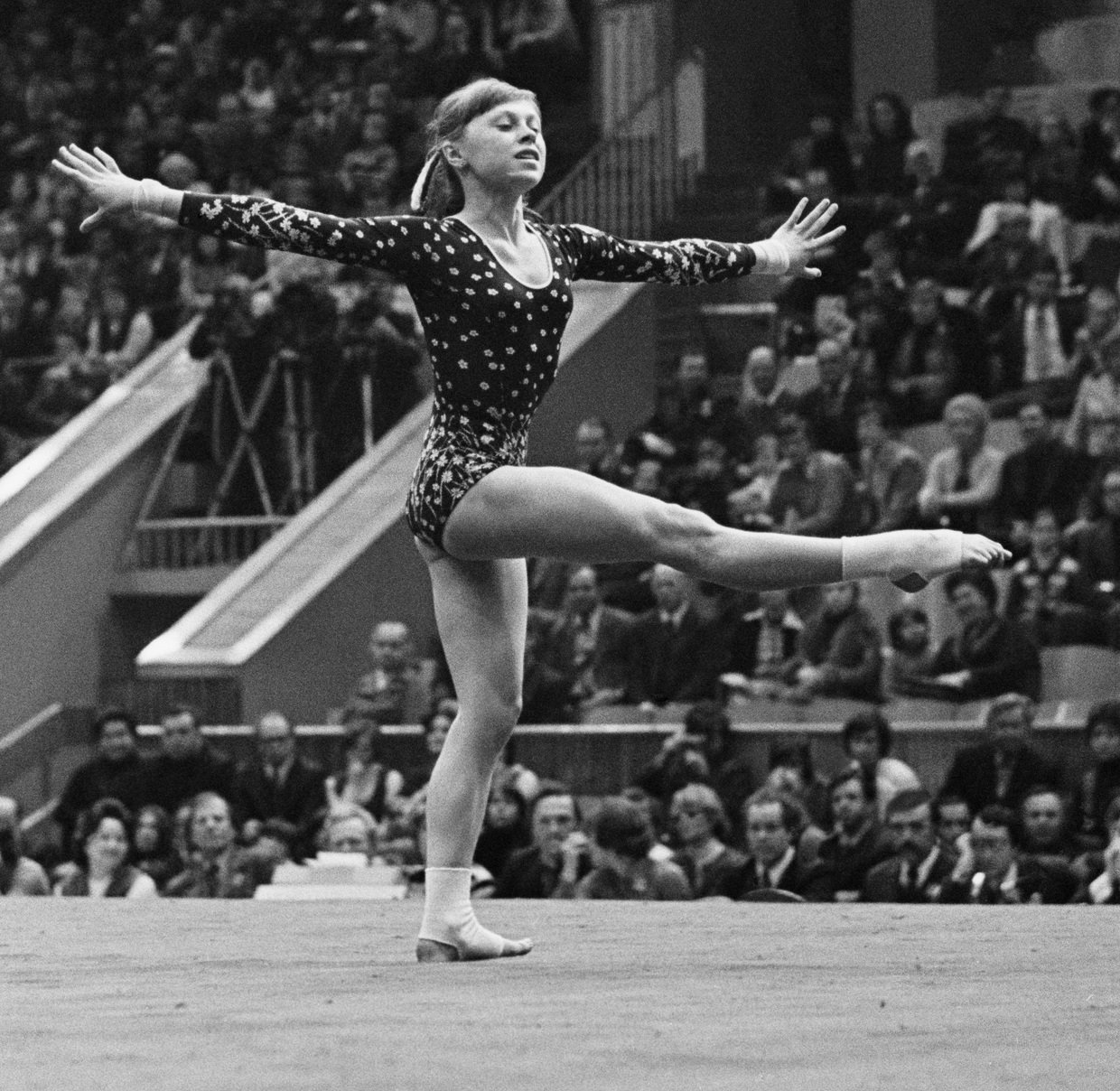
Klimenko's hopes, bound up in the stifling demands of the Soviet sports system, would continue to bear down on her slender shoulders. The weight was becoming intolerable, all the while Mukhina missing out on the carefree life of a regular teenage girl.
Poignant footage from the documentary ‘Unfree fall’ shows an all-together lighter, more playful Mukhina when she was removed from the gaze of her master.
After her world title success, Mukhina would say: “I cried on the pedestal in France not out of joy, but because I understood: no one would let me go.”

A STEP TOO FAR
But the demands continued.
In 1979, Mukhina claimed the uneven bars gold medal at the Soviet championships. She matched that achievement at the European Championships in Copenhagen, where she also added a silver medal in the floor exercise. It was Comaneci who took the all-around title as part of three golds.
The 1979 World Championships, to be held in Fort Worth, were looming but Mukhina broke her leg during an exhibition in England, ruling her out of the competition.
Comaneci would help the Romanians to team gold at the World Championships, despite her own struggles with blood poisoning resulting from a cut.
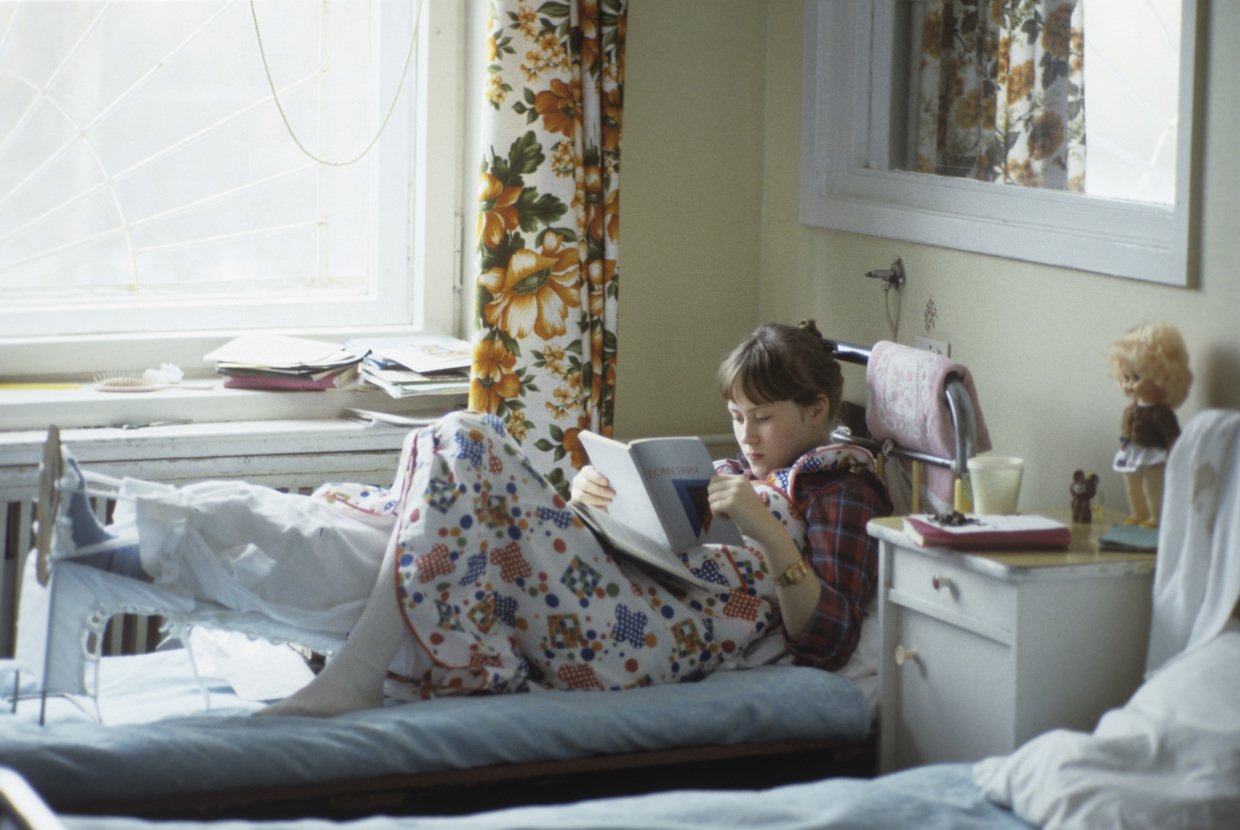
With the Moscow Olympics fast approaching in 1980, the Soviet team was still formidable but success on home soil was non-negotiable.
Likewise, there was desperation from Klimenko to get Mukhina back on her feet and into training to ensure she made the team. The cast was removed from her leg even though Mukhina had concerns that she was not yet ready to resume training.
Going through her routines in the gym, she was forced into an even greater workload to cut the excess weight she had gained during her incapacitation.
Added to this perfect storm of pressure was the complex element Klimenko had placed in her floor routine: the Thomas salto. The move was named after US men’s star Kurt Thomas and involved a 1.5 backflip-1.5 twist combination before a roll-out.
It was almost exclusive to male gymnastics and required perfect execution to avoid being cripplingly dangerous.
It would ultimately be Mukhina’s downfall.
"Several times I saw my fall in a dream,” Mukhina would later say. "I saw how they carried me out of the hall. I understood that sooner or later this would really happen.
"I felt like an animal being whipped along an endless corridor. But again and again it came to the hall. Perhaps this is fate. And they don’t take offense at fate."
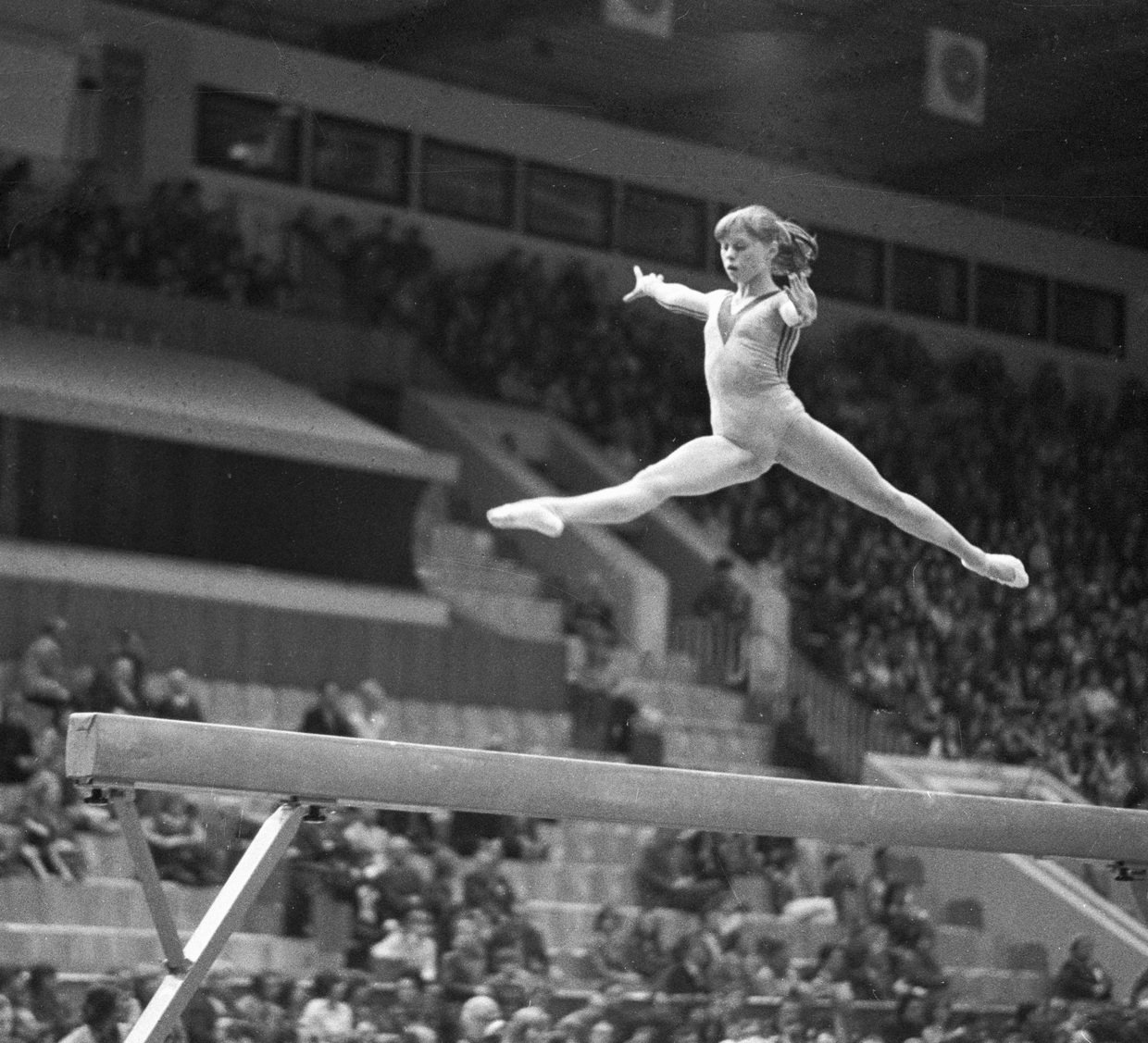
In a painful twist of irony, when tragedy did strike it was not under the gaze of Klimenko.
With the Olympics just weeks away, the Soviet team were in Minsk, putting in intense training. Klimenko was back in Moscow for a short trip, desperate to persuade sporting officials that his charge was fit enough to be included in the team, despite lingering doubts. He sensed that his legacy as a trainer was bound up in Mukhina's fate.
On July 3, 1980, Mukhina was practicing the part of her routine containing the Thomas salto. Despite purported advice from Klimenko that she should only perform it into the foam pit, she was training on the platform. Mukhina crash-landed, snapping her spine. She was 20 years old.
A girl who had just moments earlier been capable of the most graceful, powerfully seductive movements of the human body imaginable was essentially now immobile.
Somewhat darkly, Mukhina’s first thoughts as she lay stricken on the ground were said to be relief that she would finally be given some respite.
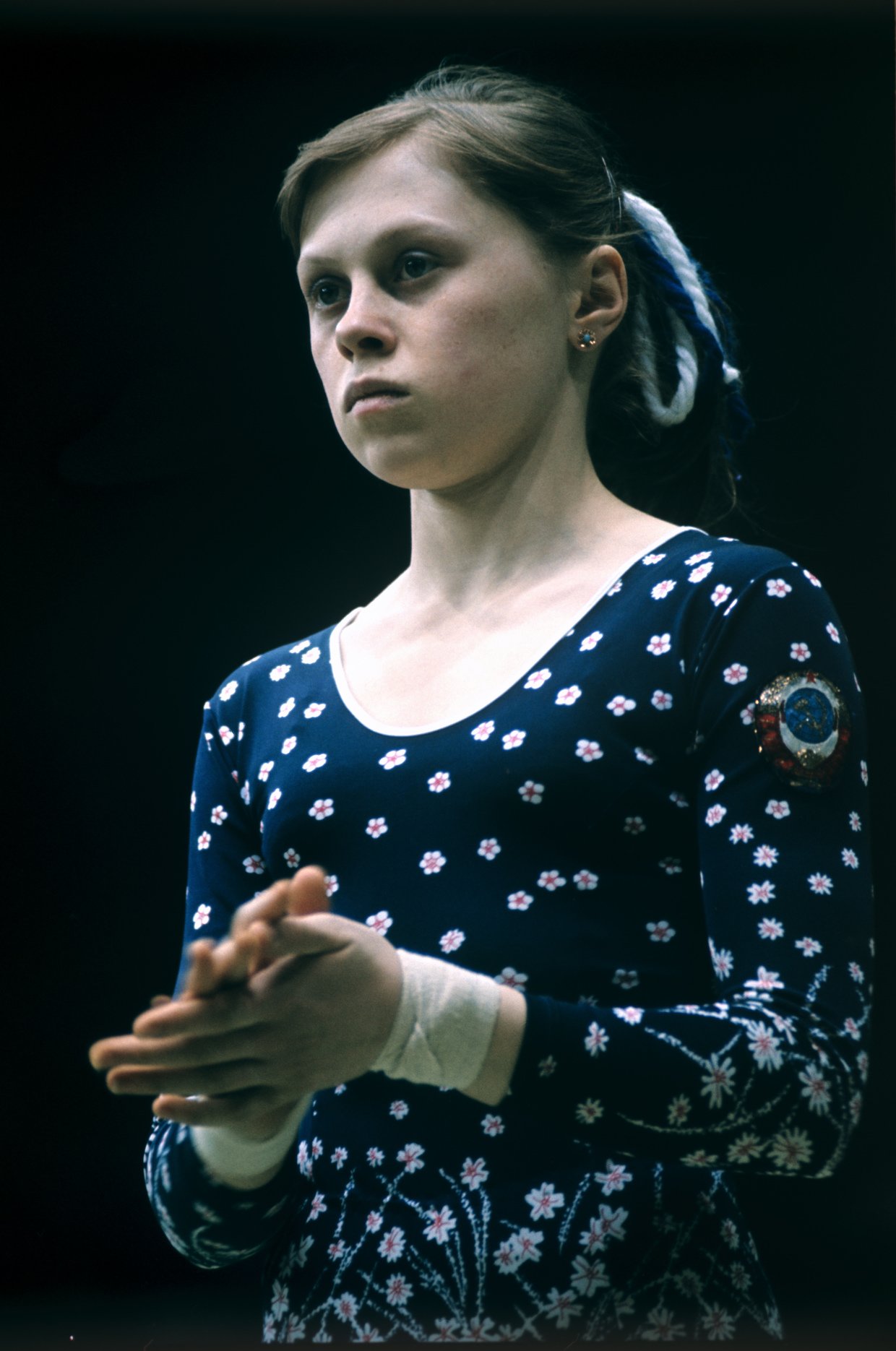
THE ESSENCE OF LIFE
The initial response from Soviet sports officials was of hushed secrecy surrounding Mukhina’s health, but it soon became evident she would never walk again, let alone grace gymnastics competition. Some said she would be lucky to live days, let alone weeks.
Mukhina did survive after surgery, and despite being wedded to a wheelchair, she is said to have found a new perspective in the wake of tragedy. Her battle was now an entirely different one: to find some quality of life to accompany her immobility.
She remained with her grandmother in a Moscow apartment, reclusive and rarely giving interviews. When she did speak, she was often philosophical about her fate.
“I realized that I needed to radically change my attitude to life,” Mukhina said. “Not to envy others, but to learn to enjoy what is available to me.
“Otherwise, you can go crazy. I realized that the commandments ‘do not think badly, ‘do not act badly’, ‘do not envy’ are not just words.
“That there is a direct connection between them and how a person feels. I began to feel these connections. And I realized that, compared to the ability to think, the inability to move is such nonsense...”

AN ENDURING LEGACY
Mukhina was keen on keeping up with world events, including in gymnastics, also learning to use her hands again to write. She was interested in psychology and philosophy, and graduated from the Moscow Institute of Physical Education.
Mukhina was awarded the Soviet Union Order of the Badge of Honor in the aftermath of her injury, while International Olympic Committee president Juan Samaranch bestowed on her the Silver Medal of the Olympic Order.
In 2021, she was posthumously inducted into the International Gymnastics Hall of Fame.
The Thomas salto, the move that had proved so costly, would later be banned in women’s and then men’s gymnastics.
Klimenko was deeply affected by the events and emigrated to Italy with his family, continuing his work as a gymnastics trainer. He never reconciled with Mukhina and his death from cancer came on November 14, 2007 – his 65th birthday.
Mukhina said she did not blame him, instead pointing to a system that drove athletes such as her relentlessly to the brink.
Mukhina herself eventually succumbed to complications from her condition on December 22, 2006. A memorial service was held in her honor five days later, and she was buried at the Troekourov Cemetery on the southwestern outskirts of Moscow.
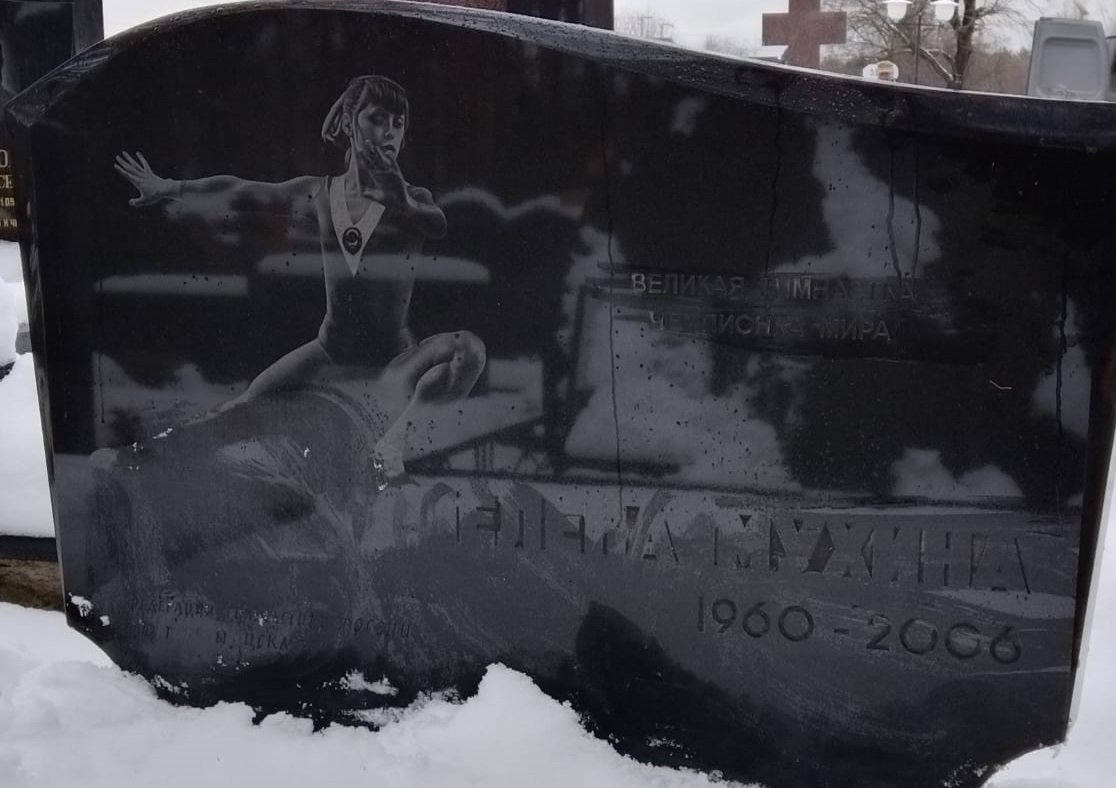
She had gone, but her legacy was far from forgotten.
As recently as the Tokyo 2020 Olympics, Mukhina’s was a name which appeared as America’s Simone Biles battled her own mental and physical demons. Biles would pull out under the glare of the spotlight; Mukhina ultimately paid the price for not being able to do the same.
Some of those wishing to remember Mukhina will pay homage this week at her resting place on the 15th anniversary of her passing.
What they will find at her grave is that image of a girl looking out intently yet elegantly, set amid a darker backdrop.
By Liam Tyler


